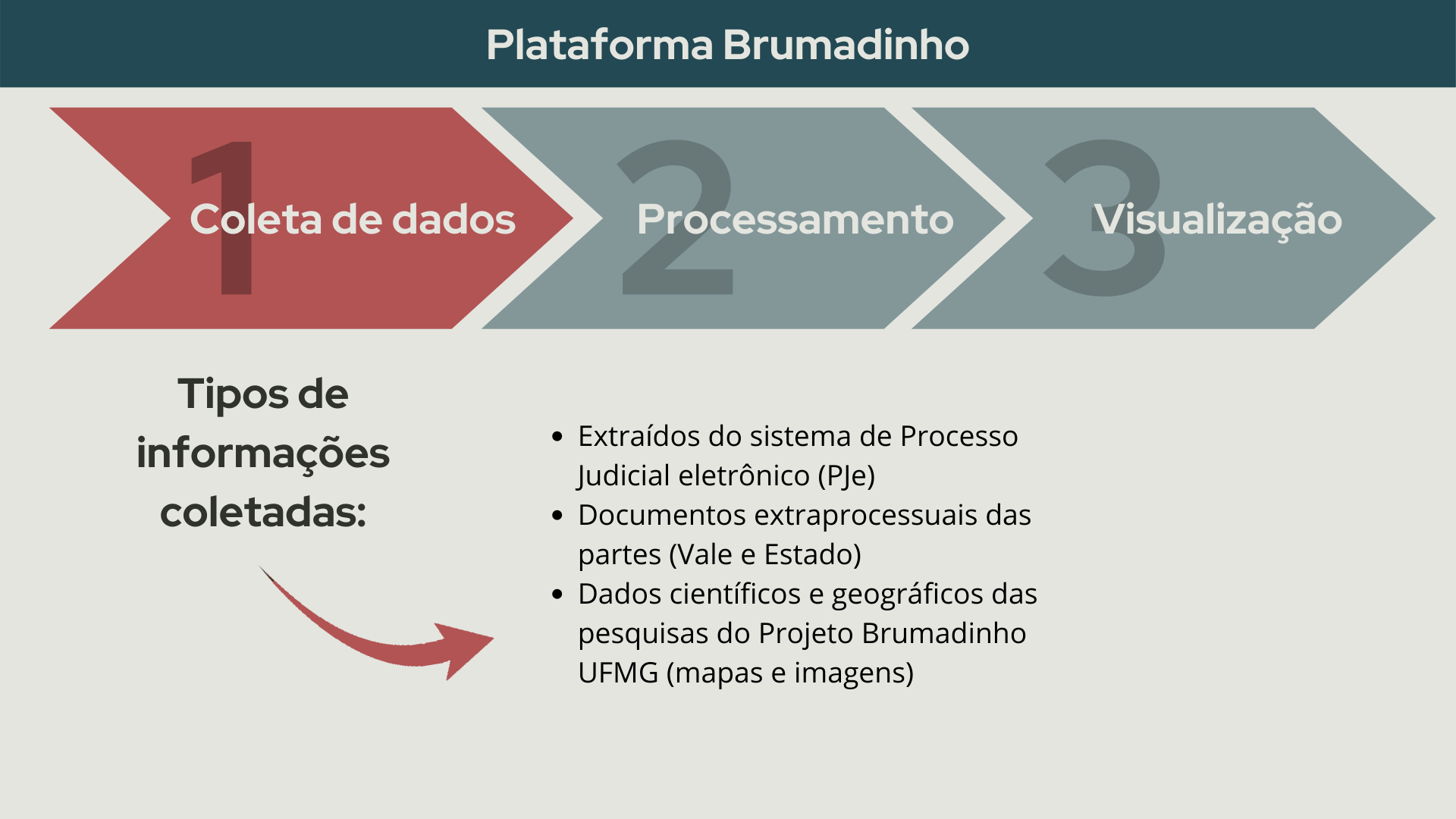How does the Brumadinho Platform work?
Understand the three stages of the Platform's operation
Published on 06/11/2020
The Brumadinho Platform is responsible for gathering information about the judicial and extrajudicial processes related to the rupture of the Córrego do Feijão Mine dam in Brumadinho. Through the platform, the community can access information from all the research subprojects that make up the Brumadinho Project at UFMG. But how does it work?
It is possible to understand the operation of the Platform in three steps:
1st Stage - Data Collection: The data you will have access to are information extracted from the Electronic Judicial Process (PJe) system on the records of the processes related to the Brumadinho disaster. They are:
- File of Case No. 5010709-36.2019.8.13.0024 Antecedent Injunction;
- Autos of Case No. 5026408-67.2019.8.13.0024 Public Civil Action (arising from the Antecedent Anticipatory Injunction);
- Proceedings of Case No. 5044954-73.2019.8.13.0024 Public Civil Action (Environmental Damages);
- Proceedings of Case No. 5087481-40.2019.8.13.0024 Public Civil Action (Economic Damages);
- Proceedings of Case No. 5071521-44.2019.8.13.0024 - Scientific Research Annex;
There is also information from extra-procedural documents, such as those that interested parties, the Valley and the State, can publish. Finally, the Platform will also receive scientific and geographic data from the UFMG Brumadinho Project's research, such as maps and images related to the studies. At the end of the research, but only after authorization by the judge, the results achieved will also be available on the Platform.
2nd Step - Processing: the data sent in the previous step are categorized (i.e., they are classified as petitions, supporting documents etc.) and processed so that they are available for consultation. This means that files that involve text, such as a petition or an evidentiary document, need to have their content available in the right format (e.g. PDF) to allow you to find the information you need. Geographic data, on the other hand, such as the coordinates of a village or a map, also need to be incorporated into the platform to be displayed in image format.
These seem like simple actions, but they require a thorough job of reading, sorting, classifying, and processing the data. A document that is in image format but contains text, for example, must first have its information manually transcribed to, after all the processing of that data, appear in your search as a document you can read. Can you imagine?
3rd Stage - Visualization: After the data has been collected, sorted, categorized and processed, the information becomes available for visualization. You can access it through keyword and subject searches or view it chronologically by viewing the court cases.
